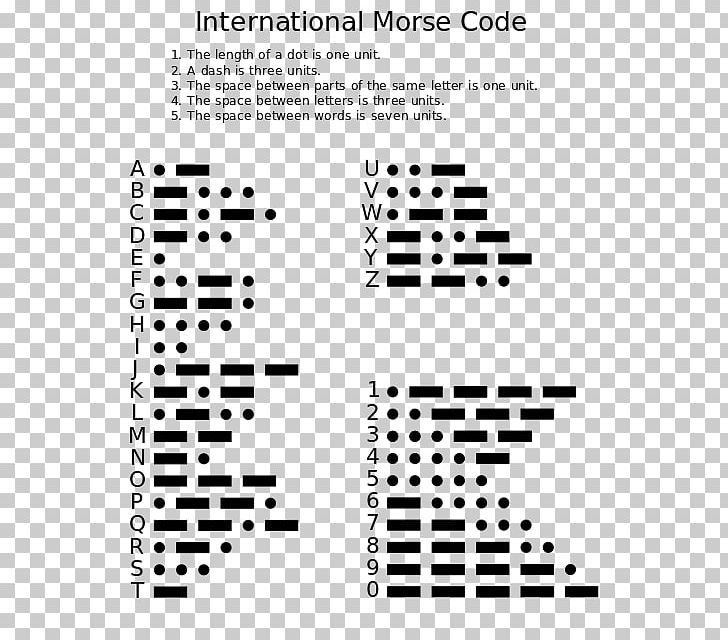

Many navies around the world use blinker lights to communicate from ship to ship when they don’t want to use radios or when radio equipment breaks down. The FCC does still issue commercial licenses that require Morse proficiency, but no jobs require it anymore.īecause its signals are so simple-on or off, long or short-Morse code can also be used by flashing lights. The Federal Communications Commission used to require all licensed amateur radio operators to demonstrate proficiency in Morse code, but that ended in 2007. Some of them may have begun in the Boy Scouts, which has made learning Morse variably optional or required over the years. Among amateur radio operators, Morse code is a cherished tradition tracing back to the earliest days of radio. There is a thriving community of amateur radio operators who treasure Morse code, too. Pilots often learn to recognize familiar-sounding patterns of beacons in areas they fly frequently. They transmit their identifiers-such as “BAL” for Baltimore-in Morse code. These are radio beacons that help pilots follow routes, traveling from one transmitter to the next on aeronautical charts. The requirement that ships monitor for distress signals was removed in 1999, though the US Navy still teaches at least some sailors to read, send, and receive Morse code.Īviators also use Morse code to identify automated navigational aids. The Coast Guard discontinued monitoring in 1995. That same agreement designated “SOS”- “dot-dot-dot dash-dash-dash dot-dot-dot”-as the international distress signal, not as an abbreviation for anything but because it was a simple pattern that was easy to remember and transmit. By 1910, US law required many passenger ships in US waters to carry wireless sets for sending and receiving messages.Īfter the Titanic sank in 1912, an international agreement required some ships to assign a person to listen for radio distress signals at all times. The shipping industry loved this new way to communicate with ships at sea, either from ship to ship or to shore-based stations. In the late 19th century, Guglielmo Marconi invented radio-telegraph equipment, which could send Morse code over radio waves, rather than wires. The first big change came just a few decades after Morse’s demonstration. The communications system that Morse code was designed for-analog connections over metal wires that carried a lot of interference and needed a clear on-off type signal to be heard-has evolved significantly. Longer words can still be sent, but they take more time. The reference to letter frequency makes for extremely efficient communications: Simple words with common letters can be transmitted very quickly. There have been other tweaks since, but “E” is still “dot,” though “Z” is now “dash-dash-dot-dot.” In 1865, the International Telecommunications Union changed the code to account for different character frequencies in other languages. The most commonly used letters have shorter symbols: “E,” which appears most often, is signified by a single “dot.” By contrast, “Z,” the least used letter in English, was signified by the much longer and more complex “dot-dot-dot (pause) dot.” Morse’s key insight in constructing the code was considering how frequently each letter is used in English.

The wires, magnets, and keys used in the initial demonstration have given way to smartphones’ on-screen keyboards, but Morse code has remained fundamentally the same and is still-perhaps surprisingly-relevant in the 21st century.Īlthough I have learned, and relearned, it many times as a Boy Scout, an amateur radio operator, and a pilot, I continue to admire it and strive to master it.

Morse wasn’t the only one working to develop a means of communicating over the telegraph, but he is the one that has survived. When the line was completed, he conducted a public demonstration of long-distance communication. In 1843, Congress gave him $30,000 to string wires between the nation’s capital and nearby Baltimore. It took six more years for him to standardize a code for communicating over telegraph wires. He invented the electric telegraph in 1832. Morse, communication changed rapidly and has been changing ever faster since. Until then, people had to have face-to-face conversations send coded messages through drums, smoke signals, and semaphore systems or read printed words. It signaled the first time in human history that complex thoughts could be communicated at long distances almost instantaneously.

You can translate these SOS signals using this morse code translator tool. The first message sent by Morse code’s dots and dashes across a long distance traveled from Washington, DC, to Baltimore on Friday, May 24, 1844-175 years ago.


 0 kommentar(er)
0 kommentar(er)
